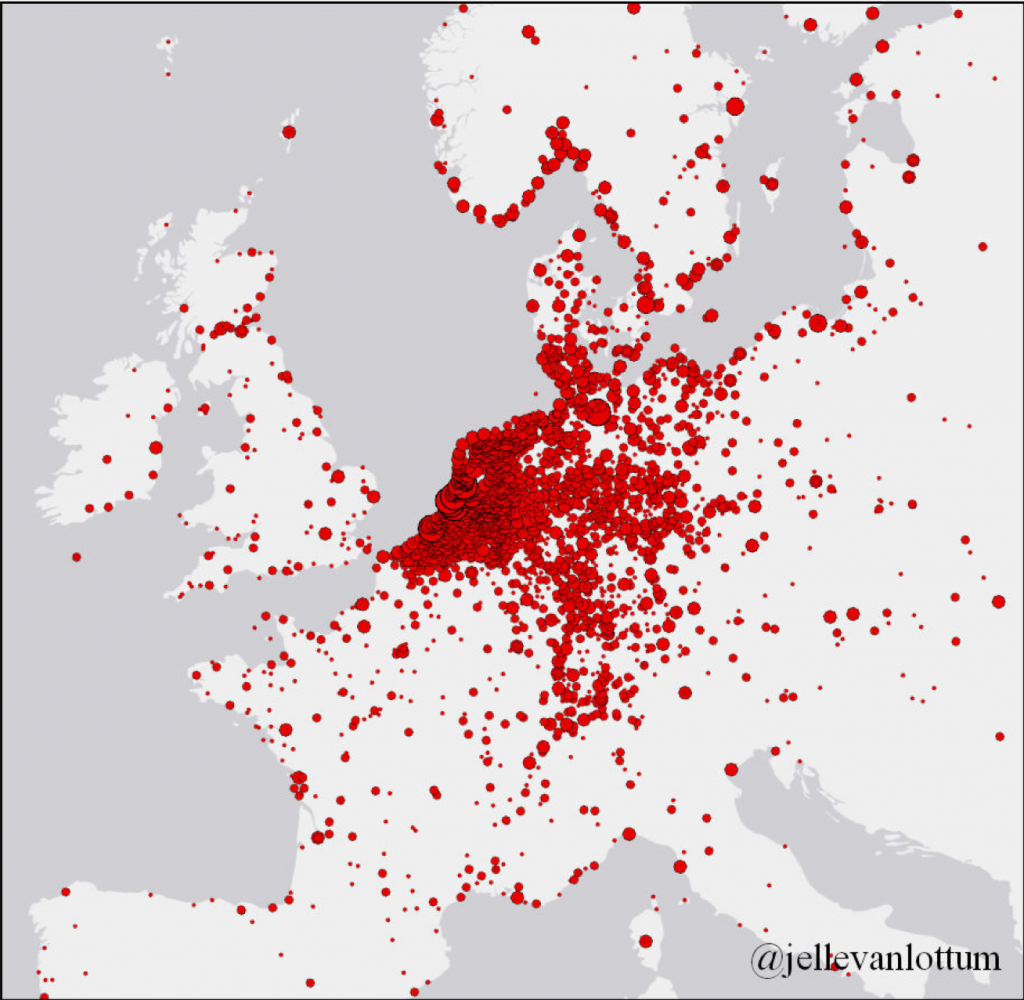Human capital, immigration and the early-modern Dutch economy: job mobility of native and immigrant workers in the maritime labour market, c. 1700-1800 (HUMIGEC)
What was the contribution of migrant workers to the 18th-century Dutch economy? We reconstructed the careers of native and migrant sailors who worked for the Dutch East India Company (VOC) and analysed these to gain insight into the skill levels of migrant workers.
Reconstructing careers and first results
We took an existing dataset consisting of 800,000 employment records as a starting point, standardised the workers’ birthplaces (see map below for a visualisation) and developed an automated entity matching tool that allowed us to reconstruct individual careers. The tool first normalises spelling variations and then generates clusters on the basis of name similarity and a set of date conditions. Our research findings will be published in a forthcoming paper, but our initial analysis of the careers dataset provided some very interesting results. While at the beginning of the 18th century native workers tended to have more successful careers, by the end of the century migrant workers were promoted more often (and were therefore more successful) than their domestic counterparts. This is an important conclusion and one we could not have reached without the tool we developed in HUMIGEC.

Funding

CLARIAH research pilot